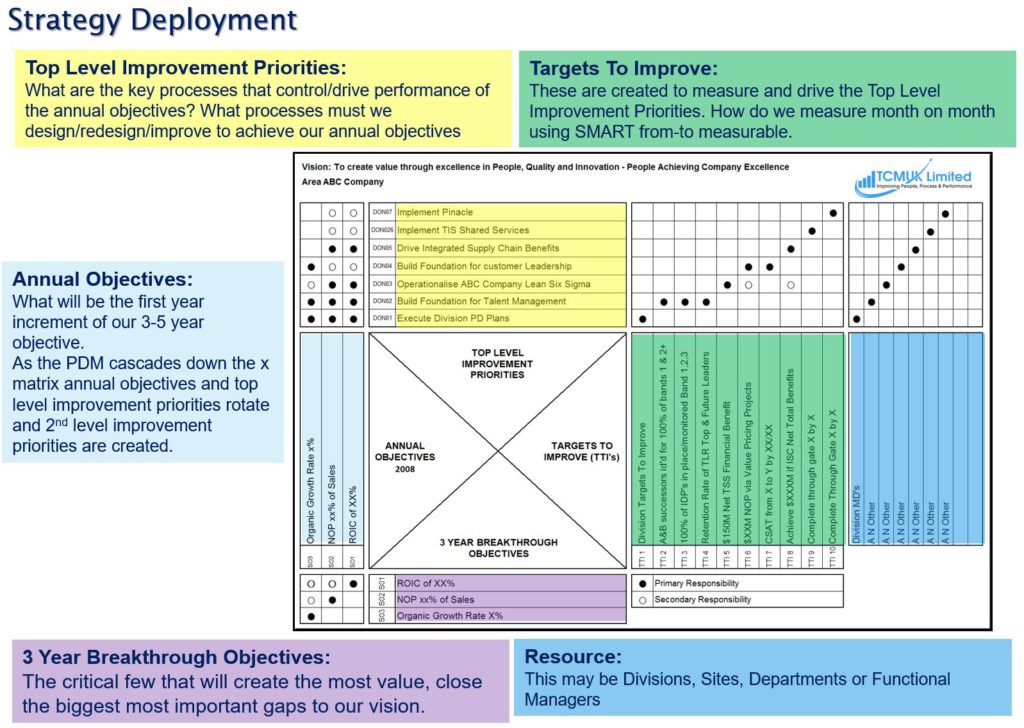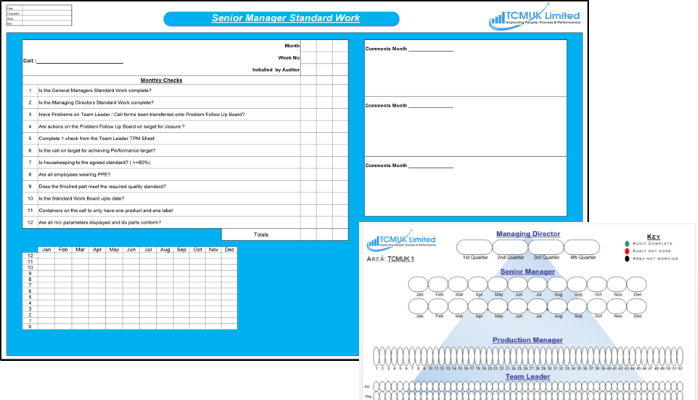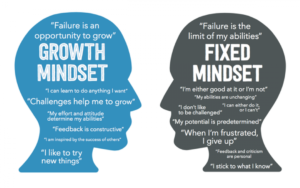We’ve all been in that meeting. The one where you look around the table and realise that despite having a room full of smart, capable people, something is fundamentally stuck. Maybe a key project is slipping, again. Or the tension between your team and another department is so thick you could cut it with a laser. Everyone is working hard, everyone is busy, but the wheels are just spinning in the mud. It’s a frustrating place to be, and if you’re in manufacturing, that frustration doesn’t just stay in the meeting room. It shows up as delays on the factory floor, as quality issues, as missed shipment dates.
Over the years, I’ve seen this pattern play out time and again. And I’ve also been lucky enough to see what it looks like on the other side. I’ve seen teams that just… click. They move with a shared understanding, they solve problems almost before they become problems, and they consistently deliver, not through luck or brute force, but through a kind of quiet, confident competence.
What’s the secret? It’s not about finding a team of superstars. It’s not about some magical project management software or the latest management fad. I think it comes down to something much more fundamental. High-performing teams are built, not found. They are engineered, intentionally, around five core pillars that support each other. When these pillars are explicitly defined, aligned, and practiced every single day, they create a resilient system for sustained performance.
This month, we’ve touched on these ideas in different ways, but today I want to pull it all together. Let’s break down the anatomy of a truly high-performing team.
Pillar 1: Purpose (The ‘Why’ That Drives the ‘What’)
First up is Purpose. Now, I know what you might be thinking. “Purpose? That sounds a bit fluffy. We make widgets, our purpose is to hit our production target.” And you’re not wrong, but you’re not entirely right either.
A team’s purpose is its reason for existing, articulated in a way that connects the daily grind to a bigger picture. It’s the answer to the question: why does this team matter to our customers and to the wider business? It’s the compass that keeps everyone pointing in the same direction, especially when the map gets confusing.
I once worked with an engineering team at a components manufacturer. They were brilliant, technically excellent, but they were burning out. They were constantly being pulled in a dozen different directions by requests from sales, operations, and R&D. They felt like a glorified help desk. Their purpose, as far as they could tell, was to react to whoever shouted the loudest.
We spent some time together, not writing a fancy mission statement, but getting to the core of their value. They didn’t just “fix engineering problems.” They were the team that “ensured our components could be manufactured reliably, at scale, and to the highest quality standard, so our customers could trust them in critical applications.” Suddenly, their work wasn’t just about closing tickets. It was about enabling trust and reliability down the entire supply chain.
This clear purpose became their filter. A new request came in. Did it help them deliver on reliability, scalability, or quality? If yes, it was a priority. If no, it was questioned. Scope creep reduced because they had a clear mandate to protect. Motivation went up because their work had a clear, valuable meaning.
In practice, this means:
- Co-creating a shared mission statement. Not one handed down from on high, but one the team and its key stakeholders build together.
- Starting your weekly planning meetings by reminding everyone of the ‘why’. “Okay team, our purpose is X. How does this week’s plan get us closer to that?”
- Tying every major task back to a customer outcome. This isn’t just about finishing a project; it’s about making a customer’s life easier or their business more successful.
A couple of questions to ask your team:
- Do we all agree on the top two or three customer problems we are here to solve this quarter?
- Can we draw a straight line from every task on our board back to delivering on that purpose?
Without a clear purpose, you’re just a group of people doing tasks. With one, you’re a team on a mission.
Pillar 2: Stakeholders (The People Who Matter)
No team is an island, especially not in manufacturing. Your work is a critical link in a long chain that includes suppliers, logistics partners, internal departments like procurement and sales, and of course, the end customer. The second pillar is about consciously managing this ecosystem. It’s about knowing who matters, what they need from you, and how you’re going to engage with them.
Ignoring this is, to put it mildly, a recipe for disaster. It leads to rework when the design team’s specs don’t account for the capabilities of the production line. It leads to conflict when the sales team promises a delivery date your team can’t possibly hit. It’s the source of so much wasted energy and political friction.
Stakeholder alignment isn’t just about getting approvals. It’s about building a shared understanding of reality. It’s about proactive communication, not reactive damage control.
In practice, this means:
- Creating a stakeholder map. Physically writing down who your key stakeholders are, what they care about, how much influence they have, and the right way to communicate with them is a game changer. Who needs a weekly email update? Who needs a fortnightly deep dive? Who just needs to be kept informed?
- Using a decision rights framework. Something like a RACI chart (Responsible, Accountable, Consulted, Informed) can work wonders. It clarifies who gets the final say on what. No more endless debate or decisions being revisited because the right person wasn’t in the loop.
- Holding regular stakeholder reviews. Needs change. Priorities shift. A quick, regular check-in can surface these changes before they become major problems.
A couple of questions for your team:
- Who are the top five people whose sign-off we need to deliver our work this month? Are they clear on what we need from them and by when?
- Are we consistently meeting our key stakeholders’ expectations? How do we know? What feedback have we received lately?
Getting this right turns stakeholders from potential roadblocks into powerful allies. They become partners in co-creating value, not just hurdles to be overcome.
Pillar 3: Delivery (The Rhythm of Getting Things Done)
Purpose gives you direction and stakeholder alignment clears the path. But you still have to actually move forward. The Delivery pillar is all about how your team gets work done. It’s your operating rhythm, your processes, your shared habits that turn good intentions into reliable, predictable output.
In manufacturing, we understand process. We have standard operating procedures, we use principles of lean to eliminate waste, we value consistency. The same thinking needs to be applied to how the team itself operates. A chaotic, unpredictable internal process creates stress and burns trust with everyone who depends on you. A smooth, predictable rhythm builds confidence and frees up mental energy to focus on improvement, not just firefighting.
This isn’t about heavy, bureaucratic project management. To be honest, it’s the opposite. It’s about creating a lightweight system that makes work visible, keeps things moving, and surfaces blockers quickly.
In practice, this means:
- A simple planning cadence. Whether it’s weekly sprints or a two-week cycle, having a regular rhythm of planning the work, doing the work, and then reviewing the work creates predictability. The goal is to set clear, achievable goals for each cycle.
- Visual management. A physical board on the shop floor or a simple digital tool showing what’s in progress, what’s stuck, and what’s done is incredibly powerful. It makes progress tangible and blockers impossible to ignore.
- Clear handoffs and escalation paths. Everyone on the team should know what happens when their part of the work is done, and who it goes to next. They should also know exactly what to do and who to talk to the moment they get stuck.
A couple of questions for your team:
- What is the smallest, most valuable thing we can deliver in our next work cycle?
- What are the top three blockers preventing us from making progress right now, and who is responsible for helping us remove them?
Great delivery isn’t about being the fastest team. It’s about being the most consistent and reliable. It’s the drumbeat that lets the rest of the organisation count on you.
Pillar 4: Capability (The Skills to Win)
You can have the best purpose, the most aligned stakeholders, and the smoothest process in the world, but if your team doesn’t have the skills and knowledge to actually do the work, you’re going nowhere. The Capability pillar is the engine of your team. It’s about having the right people with the right skills in the right roles, and critically, a plan for keeping those skills sharp and filling any gaps.
In today’s world, especially in UK manufacturing, this is more important than ever. Technology is changing. New materials and processes are emerging. Seasoned experts are retiring, taking decades of knowledge with them. A team that isn’t actively learning is a team that is falling behind.
Capability isn’t just a line item for the HR department’s training budget. It’s a core responsibility of the team itself. It’s about creating a culture of continuous learning and development that’s woven into the fabric of your daily work.
In practice, this means:
- Mapping your skills. What capabilities are absolutely critical for you to deliver on your purpose? Who on the team has them? Where are the gaps? Where are your single points of failure, where only one person knows how to do something critical? Once you see it, you can build a plan.
- Cross-training and structured onboarding. Giving team members opportunities to learn each other’s roles builds resilience. If someone is off sick or leaves, the work doesn’t grind to a halt. And having a proper process for bringing new members up to speed is vital for maintaining performance.
- Building in learning rituals. This could be a weekly ‘toolbox talk’ on a new safety procedure, an after-action review following a project, or a ‘learn and apply’ session where someone teaches a new skill they’ve picked up.
A couple of questions for your team:
- Looking at our next big milestone, what are the critical skills we need? Do we have them covered?
- What piece of coaching or training would do the most to reduce risk or improve the quality of our work right now?
Investing in capability is investing in your team’s ability to adapt and thrive in the face of change. It’s what turns a good team into a great one over the long haul.
Pillar 5: Relationships (The Glue That Holds It All Together)
This last pillar is, I think, the most important and often the most overlooked. It’s about the quality of the human connections within the team. It’s about trust, open communication, and psychological safety. It’s the invisible glue.
You can have all the other pillars in place, but if team members don’t trust each other, if they’re afraid to speak up, if they’d rather work around a problem than have a difficult conversation, your performance will always have a ceiling. And when the pressure is on, that ceiling gets very low, very fast.
Strong relationships are what allow a team to have healthy conflict, to challenge ideas without making it personal. They enable rapid problem solving because people feel safe to say “I made a mistake” or “I don’t know how to do this” early, when it’s still easy to fix.
On a factory floor, psychological safety has a very real meaning. Does an operator feel safe enough to hit the stop button on a multi-million-pound production line because they’ve spotted a potential quality issue, without fear of being blamed for the downtime? If the answer is yes, you have a high-performing culture. If the answer is no, you have a culture that hides problems until they become catastrophes.
In practice, this means:
- Making it safe to speak up. Leaders have to model this by admitting their own mistakes and actively asking for dissenting opinions. It means treating failures as learning opportunities, not as something to be punished.
- Building in structured feedback loops. Creating regular opportunities for peer-to-peer feedback, self-reflection, and leader feedback helps normalise these conversations and makes them less scary.
- Using team rituals to build cohesion. Running effective retrospectives where the team honestly discusses what went well and what didn’t is crucial. Celebrating successes and recognising individual contributions builds morale and a sense of shared identity.
A couple of questions for your team:
- On a scale of 1 to 10, how safe do people feel to voice a concern or a dissenting opinion? What would it take to move that number up one point?
- How could we improve the way we collaborate to shorten our feedback cycles and catch problems earlier?
Relationships are the foundation. When they are strong, they can bear the weight of immense pressure. When they are weak, even the smallest crack can bring the whole structure down.
From Pillars to a Living System
The real power of this model isn’t in looking at each pillar in isolation. It’s in understanding how they all connect and reinforce one another.
A clear Purpose makes it obvious who your key Stakeholders are. Knowing your Stakeholders’ needs shapes your Delivery process. The challenges you face in Delivery reveal your Capability gaps. Investing in Capability strengthens the Relationships and trust within the team. And those strong Relationships are what allow a team to stay connected to their Purpose when things get tough. It’s a virtuous cycle.
The quickest way to turn this model from a nice idea into your Monday morning reality is to work on it together, as a team, using your real challenges. This is precisely what our High-Performing Teams Workshop is designed to do. It’s a practical, one-day session where you build each pillar around your actual work, not generic theory. You’ll leave with a co-created purpose statement, a clear stakeholder plan, a simple delivery rhythm, a focused capability plan, and a set of shared rules for building trust and psychological safety.
To make this tangible, you can even track your progress with a simple scorecard. On a scale of 1 to 5, how would you rate your team’s clarity of purpose? Your stakeholder alignment? For delivery, you can track your on-time completion rate. For capability, skills coverage. For relationships, a simple psychological safety poll. Collecting this data from quick surveys and retrospectives helps you see trends and focus your improvement efforts where they’ll have the biggest impact.
Ultimately, building a high-performing team isn’t magic. It’s a process. It requires the same discipline, focus, and commitment to continuous improvement that you already apply to your manufacturing processes. By focusing on these five pillars, you’re not just managing a team; you’re building a resilient, adaptable, and powerful engine for performance.












